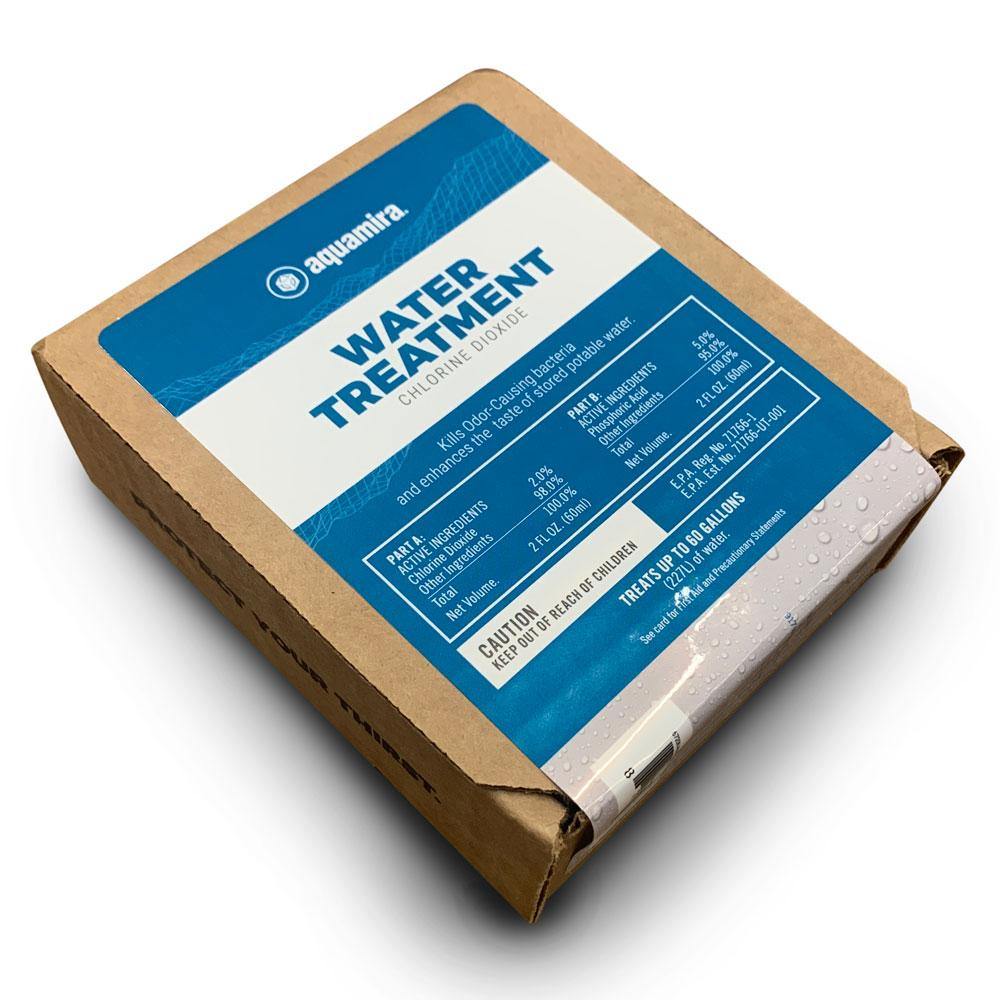How Much Food and Water Should Be Stored Per Person for an Emergency?

The Essentials of Emergency Food and Water Storage
Could your current emergency storage keep everyone in your household fed and hydrated if the tap suddenly ran dry or the pantry was your only grocery store? With emergencies often disrupting daily routines and changing what you can access, having the right amount of water and food ready is essential for preparedness and self-reliance.
Experts recommend setting aside at least one gallon of water per person each day and maintaining a three-day food supply as a minimum. Longer disruptions call for an even bigger safety net to fully support your well-being.
In this article, you'll find straightforward strategies for calculating reliable emergency water and food supplies per person and practical steps for choosing, storing, and maintaining essentials. We'll walk you through preparing for anything from a brief outage to long-term situations, offering context, tips, and recommended tools so you can protect your investment and feel confident about your preparedness plan.
What You'll Learn
- Calculating critical water and food reserves for emergencies
- Essential guidelines for short- and long-term storage
- How to choose practical, nutritious supplies per person
- Tips for storing water and food safely
- Recommended tools, food, and products for effective preparedness
TLDR: How Much Food and Water to Store
Store at least 1 gallon of water per person per day, and keep a three-day minimum supply of non-perishable food for each household member. Expand your stock to a two-week reserve for sheltering at home. Include essential sanitation, rotate supplies regularly, and use reliable tools (like Aquamira Water Treatment) to maintain safety and self-reliance in any situation.
Learn more about Aquamira Chlorine Dioxide Water TreatmentWhat Are the Best Emergency Storage Guidelines?
- Water Storage Calculation
- Non-Perishable Food Essentials
- Sanitation and Hygiene Supplies
- Food and Water Rotation Schedules
- Essential Tools for Storage and Preparation
Water Storage Calculation: Why 1 Gallon Per Day Matters
Understanding water requirements forms the backbone of emergency planning. Each person in your household needs a minimum of one gallon of water per day, set aside for both drinking and basic sanitation.
If you need to evacuate, plan a three-day supply per person. If you are sheltering at home, extend this up to two weeks for greater security.
You'll need extra water for children, pregnant people, those with medical needs, and pets. Warm weather and heavy activity also mean you should plan for increased water use.
- Store at least 1 gallon per person, per day
- Keep at least a 3-day supply if evacuating, and a 2-week reserve for sheltering at home
- Adjust amounts for infants, pets, and individuals with special needs

Non-Perishable Food Essentials: Building a Sustainable Reserve
Stocking up on non-perishable foods supports your nutrition when grocery trips are interrupted. Start with at least a three-day supply per person for emergencies requiring evacuation.
Expand to two weeks or more for shelter-in-place situations at home. Select foods that offer enough calories, protein, and essential nutrients.
Choose items that do not need refrigeration or cooking, such as canned meals, energy bars, nut butters, dried fruit, and grains. Aim for foods with a long shelf life and that require simple preparation, so utility outages do not pose a problem.
Pick foods that require little or no added water to prepare. Include variety—both in flavor and texture—to prevent meal fatigue. Remember dietary restrictions, allergies, or chronic health conditions, and always include a manual can opener in your kit.
- Energy bars, canned goods, nut butters, and dried foods
- Prioritize shelf life, nutrition, and necessary calories
- Manual can opener is essential for any food storage kit
"In a disaster or emergency, focus on foods that meet both caloric and basic nutrition needs. Well-chosen, non-perishable staples like beans, grains, and canned goods can sustain you while offering the variety and nutrients necessary for well-being."
Sanitation and Hygiene Supplies: Beyond Food and Water
Maintaining hygiene is as important as maintaining your food and water supply. Good sanitation practices lower your risk of illness during emergencies.
Include cleaning supplies such as moist towelettes, garbage bags, bleach, and toilet paper in your emergency storage. Feminine hygiene products, hand sanitizer, and a portable toilet also help during extended outages.
- Toilet paper, moist towelettes, garbage bags, and bleach for sanitation
- Include feminine hygiene items, hand sanitizer, and portable toilet options
- Proper hygiene supplies support your health and safety during a crisis
These items help control waste and stop the spread of illness, which is vital for long-term safety and comfort when normal routines change.
Food and Water Rotation Schedules: Keeping Supplies Fresh
Keeping your emergency storage usable means rotating supplies regularly. Everything can expire or lose quality, so write the purchase or fill date on each item. Always use the oldest supplies first by following a straightforward first-in, first-out system.
Replace most non-perishable foods and water stores every 6-12 months. Check containers for leaks or signs of contamination regularly. Treat stored water with a solution like Aquamira Chlorine Dioxide Water Treatment to refresh supplies as needed. This process helps ensure that your reserves are safe and ready whenever you may need them.
- Clearly label purchase and fill dates on all items
- Rotate food and water supplies every 6-12 months
- Inspect containers and replace water as necessary
Essential Tools for Storage and Preparation: Must-Have Items
Accessing and using your food and water stores is easier and safer with the right tools. Your emergency kit should have a manual can opener, water purification tablets or filters, flashlights with spare batteries, a multipurpose tool, and an emergency weather radio.
A backup cooking method, such as a portable stove or emergency grill, makes meal preparation possible even during a power outage. By storing these tools with your supplies, you'll be ready to handle a range of situations smoothly.
- Manual can opener, water purification tablets or a system
- Batteries, flashlight, and a multipurpose repair tool
- An alternative cooking method and a dependable weather radio
Focusing on water and food reserves, proper sanitation, scheduled rotation, and reliable tools creates practical self-reliance and supports safety for everyone in your home.
A Step-by-Step Plan for Calculating and Preserving Your Emergency Supplies
A dependable solution for emergency food and water storage balances accurate calculation with proven preservation steps. The most effective strategy begins by figuring out exactly how much water and food each person and animal in your care requires, then safely maintaining that stockpile for as long as you need.
We recommend Aquamira Chlorine Dioxide Water Treatment for safeguarding your water supply. This treatment provides reliable contaminant protection and supports effective long-term water storage.
Maximize Safety with Accurate Calculations
- Include everyone in your household, including pets, as you plan your storage.
- Determine daily needs: keep at least 1 gallon of water and 2,000 calories per person per day. Build a 2-week reserve for sheltering at home, or a 3-day supply for evacuation kits.
- Choose non-perishable, easy-prep foods that suit your family's tastes and dietary needs. Look for canned meals, energy bars, or MREs, and remember a manual can opener.
- Treat stored water with Aquamira Chlorine Dioxide to keep it contaminant-free and ready to use during emergencies.
Maintain Quality and Extend Shelf Life
- Aquamira prevents mold, bacteria, and odors, preserving water safety and taste over time.
- Label and date all food and water containers, rotating your stock to keep everything fresh and dependable.
- Use food-grade storage containers with tight lids to reduce contamination risk and protect your emergency supplies.
Following these practical steps as you build your storage plan prepares you for different emergencies. Aquamira helps ensure your water stays clean and dependable, so your family can be confident in your emergency readiness.
Conclusion: Finalizing Your Emergency Food and Water Storage Strategy
You now have the main points for safe emergency planning: store at least one gallon of water and enough shelf-stable food for every person each day, along with first aid, sanitation, and spare clothing essentials. This guide covered easy ways to keep your storage rotation manageable and practical while highlighting water safety and the importance of reliable tools.
Water security is essential to every emergency storage plan, and Aquamira helps keep your supplies safe for the long term thanks to proven preservation methods.
Take Your Next Step Toward Confident Preparedness
Secure your essential water reserves with Aquamira. Learn more about how Aquamira keeps your emergency supply safe and join thousands who trust proven treatment for storage confidence.
Learn More©copyright 2025
ReadyMaster, all rights reserved.
